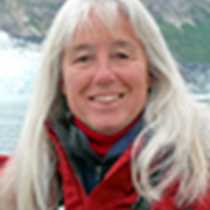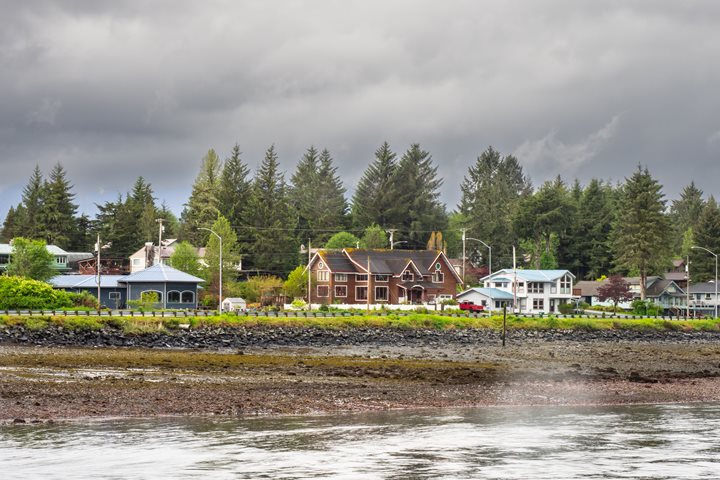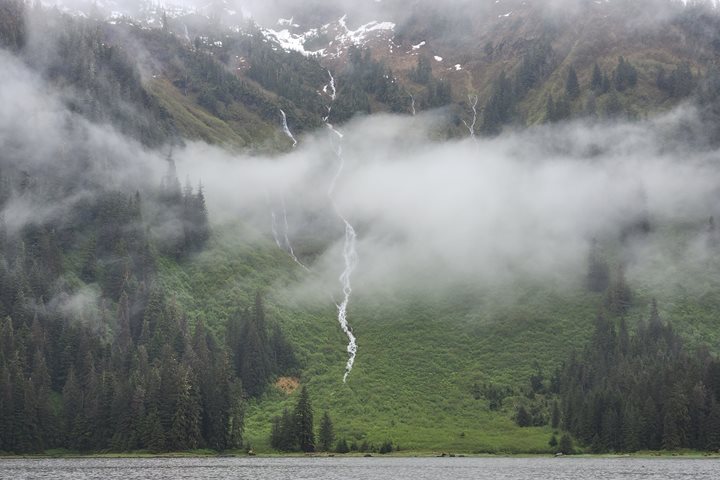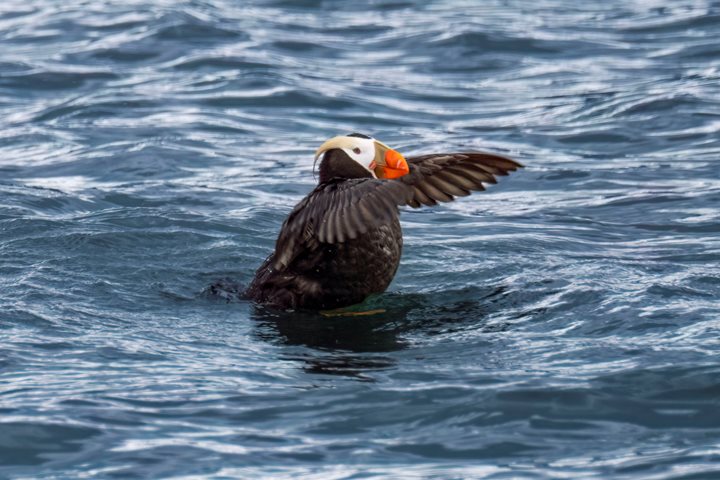From Juneau, Alaska’s capitol city where we embarked yesterday, National Geographic Sea Lion motored southward in Stephens Passage and turned to the east into Tracy Arm and toward the Coast Range early this morning. This narrow, tortuous thirty-mile glacier-carved waterway snakes through dramatic scenic wilderness to a tidewater glacier at the end – South Sawyer Glacier. Overcast skies really enhanced the vivid blue hues of the glacier and the icebergs it spawned. Via expedition landing craft, we explored the bay in front of the face of the river of ice, finding mountain goats on the steep shrubby slopes and ledges, and harbor seals resting on icebergs. The seal pups are all weaned now and the animals are going through a molting phase. We kept our distance and were careful not to disturb them during this sensitive time.
The weather held nicely and the serenity was periodically punctuated by the “white thunder” of the calving glacier. Only about one tenth of an iceberg shows above the surface of the water. We captured and examined the patterns of a small “growler” (piece of ice up to a meter above the surface) at close range, even tasting the ice that had fallen as snow on the Stikine ice field about 200 years ago and would soon be in a liquid stage once again. Liquid water is most dense at about 4 degrees centigrade. After that it starts to expand as it further cools and freezes and therefore floats as a solid. The work of glaciers involves the erosion, transportation and deposition of materials and the realization of the power of water in all its phases demands respect for this unusual and vital substance.
A visit from friendly Vikings bearing spirited gifts warmed our insides before we returned to the ship.
Back on board, interested travelers attended a digital photo basics presentation by Max to prepare us for the many photo opportunities of the voyage.
In the afternoon we arrived at Williams Cove for a chance to explore the temperate rainforest and kayak along the shoreline in the protection of the bay, which we shared with a beautiful iceberg, surf and white-winged scoters, and a humpback whale. In the forest we walked the animal trails, seeing evidence of the wildlife that lives here. We learned about the trees and other vegetation in the Tongass National Forest – our nation’s largest national forest at almost 17 million acres. Temperate rainforests, though less diverse, have more biomass (living matter) than tropical rainforests. Today’s moisture freshened the many shades of green of the varied shapes, textures and sizes of leaves. Among the many interesting plants discussed today were devil’s club, skunk cabbage and salmon berry. August is a great time for mushrooms in the forest and we enjoyed the challenge of photographing several kinds, including the vividly beautiful hallucinogenic Amanita muscaria (fly agaric).
We returned in time for a special “Taste of Alaska” in the lounge, followed by our first re-cap of the voyage, and dinner. Afterwards, as we exited the Tracy Arm fjord system into Stephens Passage, we were treated to a lunge-feeding humpback whale that delighted us with tail-up dives in the waning evening light.







